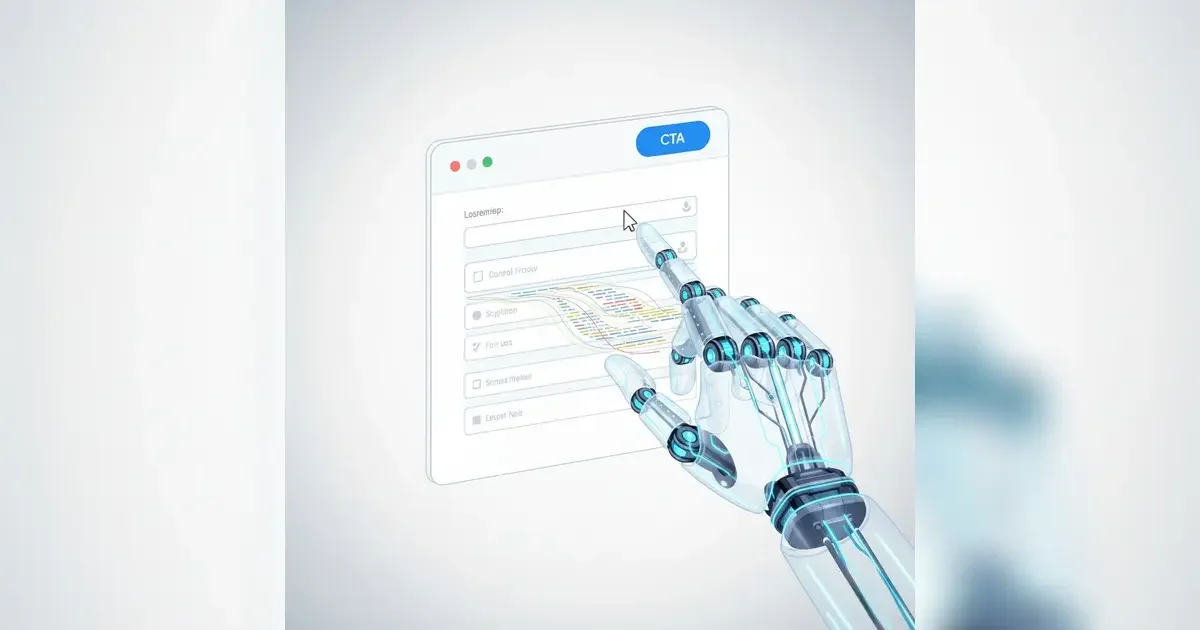Google’s Gemini 2.5 “Computer Use” can actually use your computer — here’s what matters
If you’ve ever wished your AI assistant could stop “suggesting” and just do—open a site, click that stubborn button, fill the annoying form, even drag a slider—Google’s new Gemini 2.5 Computer Use model is exactly that move. It doesn’t beg for APIs or backdoors. It looks at the screen, understands the interface like a person, and takes actions step by step until the task is done. Google says it’s available in public preview for developers via Google AI Studio and Vertex AI, and it’s already topping web and mobile control benchmarks.
What exactly is “Computer Use”?
Traditional chatbots talk about tasks; Computer Use performs them through a tight “agent loop”: the model gets your goal and a screenshot, proposes the next UI action (click/type/scroll/etc.), your client executes it in a secure browser, grabs a fresh screenshot, and the loop continues until the goal is met. Think of it as a patient intern who keeps checking the screen and asking “what next?”—except it’s tireless and consistent. Google’s docs show this flow clearly and provide a reference implementation with Playwright.
Under the hood, the model is specialized on top of Gemini 2.5 Pro, leaning on its visual understanding and reasoning to navigate interfaces built for humans, not machines. That’s crucial for real-world tasks: form fills, dropdowns, filters, and even flows behind logins—places where API access is patchy or non-existent.
How capable is it—really?
Early demos show the agent browsing to specific sites, gathering details, moving sticky notes on a web board, and scheduling appointments—start to finish. Google reports the model outperforms leading alternatives on multiple browser and mobile control benchmarks while also delivering lower latency. Independent write-ups note it operates via a browser with a set of predefined actions (open, type, click, drag, etc.), which keeps things predictable for developers.
For builders, the important bit: you call a computer_use tool in the Gemini API, specify a browser environment, and implement a few glue pieces—mainly, executing the suggested actions and feeding back screenshots/URLs. Google’s guide even names the current preview model: gemini-2.5-computer-use-preview-10-2025.
Safety isn’t an afterthought (thankfully)
Agents that click things on your behalf can also click the wrong things. Google’s shipped safety guardrails at two levels:
· Built-in model safety plus a per-step safety service that classifies each proposed action (allowed vs. requires confirmation).
· Developer controls to refuse or require consent for high-risk actions (e.g., purchases), and clear guidance on sandboxing and avoiding sensitive workflows.
There’s also a system card detailing threat models like prompt injection and scam UIs. Translation: by default, it tries to be careful, and you can make it even pickier.
Why this matters for India
Let’s be honest: a lot of Indian digital life is still… form-centric. Bill payments on portals, GST filings, tender downloads, university admissions, state board results, appointment slots on overbooked sites—the kind of tasks you can’t easily plug into a single API. A browser-capable agent that sees the page and acts like a person is a big unlock:
· SMBs & startups: automate onboarding flows, marketplace listings, competitor checks, and repetitive QA on web apps.
· Enterprise teams: RPA-style tasks in the browser without heavyweight licenses—especially handy alongside Vertex AI governance.
· Consumers: “Find and book the next available Tatkal-ish slot” is still aspirational, but research-and-fill workflows (travel forms, event registrations) are closer to reality now.
Add to that: Google has been investing in local processing and latency improvements for Gemini in India (not this exact model, but the trajectory is clear), which reduces the “AI is slow” friction we all hate.
What it can (and can’t) do today
Strengths right now
· Works in the browser with visual grounding—great for sites without APIs.
· Predictable developer surface with predefined actions; easy to supervise.
· Benchmarks and demos indicate solid accuracy at lower latency versus peers.
Mind the gaps
· It’s a public preview—expect rough edges, especially on tricky layouts or dynamic ads.
· Browser-first (not full OS control). Chatbots that control your entire desktop are a different beast.
· You still need to build the agent loop and run it in a sandbox (VM/container/profile). RPA magic doesn’t appear out of thin air.
Getting started (dev quick hit)
· Try it in Google AI Studio or Vertex AI (enterprise).
· Use the reference implementation with Playwright, or the Browserbase demo to see it in action.
· Lock down your environment; set confirmation gates for purchases or sensitive clicks; avoid critical decisions and sensitive data for now.
The bigger picture: agents that actually finish tasks
Computer Use is a quiet but pivotal step in the “agentic” future everyone’s talking about—AIs that not only reason, but execute across messy, real-world interfaces. We’re moving from chat to completion. For Indian users and builders, that means less time wrestling with clunky portals and more time shipping, selling, or simply getting on with life.
And yes, the next obvious chapter is combining this with calendars, payments, and identity in a privacy-respecting way. That’s where the real convenience—and the real responsibility—will be. For now, Gemini 2.5 Computer Use gives us the hands to go with the brains.
